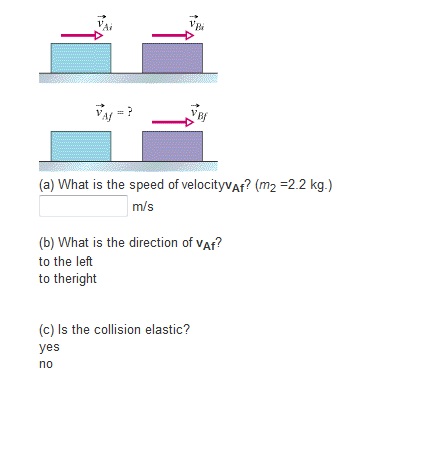In the figure, block A (mass 1.0 kg) slides into block B (mass 2.3 kg), along a frictionless surface. The directions of velocities before and after the collision are indicated; the corresponding speeds are vAi = 5.9 m/s, vBi = 2.5 m/s, and vBf = 4.4 m/s.?
1 Answer
I found that you have an inelastic collision where mass
Explanation:
Considering:

I would start using conservation of momentum that works for both elastic or inelastic collisions:
We can check whether is elastic or not observing if Kinetic Energy,
cancel the

